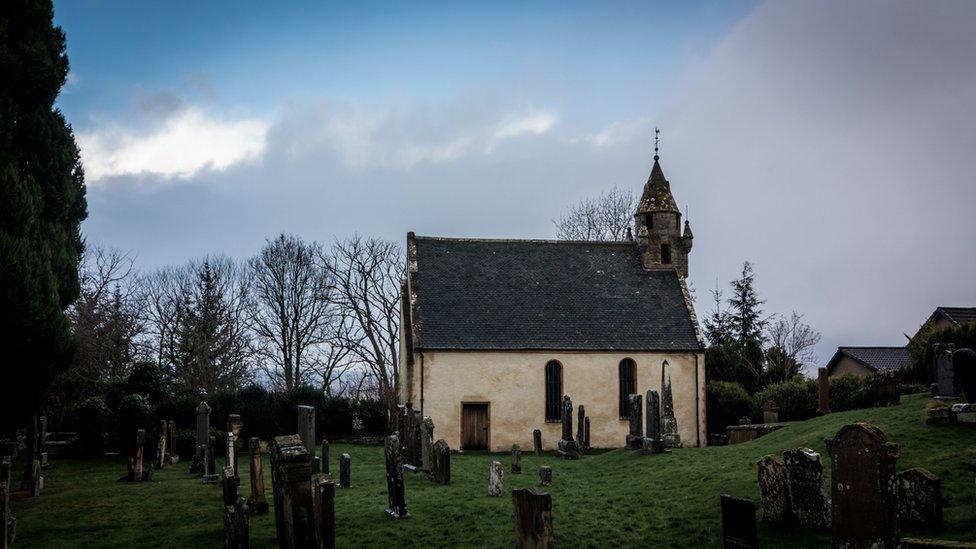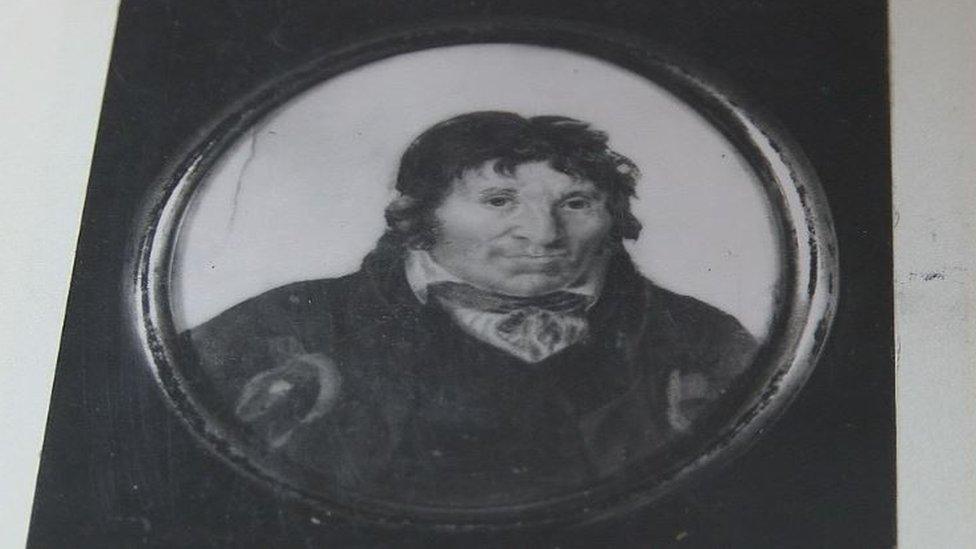Hunting down The Old Fox mystery...and digging up another
- Published

Wardlaw Mausoleum was believed to be the resting place of the clan chief
Historian and broadcaster Dan Snow was invited to be part of the team trying to identify the remains of Lord Lovat, the last man in Britain to be beheaded for treason. Things didn't quite turn out as planned.
Last year, I got a call about a Highlander without a head.
Simon Fraser, Lord Lovat, a prominent highland laird who had played both sides in the civil wars that plagued Scotland and Britain in the first half of the 18th Century was the last man in Britain beheaded for treason.
The Stuart family hoped to regain the throne of their forebears, to stake their "Jacobite" claim against their cousins, the Hanoverians, who had been chosen by the parliament in Westminster because of their Protestant religion.
The Stuarts were originally from Scotland and it was in the Highlands of Scotland, with their warlike, fiercely-independent clan system, that the Stuarts found many of their most willing supporters.
Lord Lovat had skilfully navigated his way through life occasionally rebelling, at other times collaborating, and by 1745 was a powerful Highland magnate, trusted by London.
When Charles Edward Stuart, "Bonnie Prince Charlie" landed that year in Scotland, Lovat faced a difficult decision. He wisely prevaricated until the prince seemed to have unstoppable momentum.

Lord Lovat faced a decision over whether to support Bonnie Prince Charlie
The Jacobite army routed government troops in Scotland and surged into England. At that point, Lord Lovat threw in his lot with the Jacobites. It was a fatal mistake.
The British Army rallied, marched north, and annihilated the hungry, ragged Jacobite force at the battle of Cullloden, the last set piece battle on British soil.
The victorious government army hunted down survivors, butchered the wounded and unleashed a brutal repression across the Highlands. Lord Lovat was captured, tried in Westminster and beheaded for treason outside the Tower of London.
That's where the mystery started. The British government insisted that his body was thrown into a shallow grave in The Tower. But his clansmen insisted that they smuggled his body back from London to bury him in his family crypt at Wardlaw, just outside Inverness.
When I found out that the University of Dundee team, led by the legendary Professor Dame Sue Black, was keen to investigate the coffin in the crypt which the clan believed contained Simon Fraser, I was desperate to go and observe.
This is the kind of eccentric day out which makes me love my job. We donned our protective clothing, clambered down into the crypt and opened the coffin.

Jamie Fraser's Outlander character is the grandson of the Old Fox
We set aside the heavy lead outer cover, then removed the 18th Century wood lid which had crumbled into the coffin. Inside was a collection of bones, ribs, sternum, a pelvis, two hands, and pieces of spine. But no head.
I was jumping to conclusions and getting far too excited. Sue Black, by contrast, sat with a microscope and calmly identified every fragment of bone as it was brought to her. As the day wore on, things started to get weird. A child's tooth emerged. Then duplicate bones. We had more than one body.
By nightfall, Sue believed that we did not have an elderly Jacobite laird in the coffin, but a mixture of other burials. It is not unusual for coffins in crypts to become repositories for any bones that dogs and foxes might dig up in the cemetery.
In particular, there was one fairly complete corpse, not of an elderly man, but of a young woman. The myth of the Highland Chief brought home by his loyal retainers remains, for the moment, a myth. We had set out to solve one mystery, and we have ended up with another. Who is the woman? And where on earth is her head?
The whole adventure will be available as a podcast on Dan Snow's History Hit, and you can see the documentary onhistoryhit.tv, external
- Published18 January 2018
